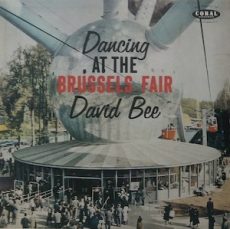
Daily Dose Of Jazz…
David Bee was born on October 17, 1903 in Brussels, Belgium. He was a multi-instrumentalist adept on clarinet, harp, piano, and alto and tenor saxophone. For a year in 1924 he played with the group Bistrouille ADO before co-founding an ensemble with Peter Packay called Red Beans. The group toured widely throughout western Europe.
After returning to Belgium, David joined Robert De Kers’s band, and also played in Paris, France at Chez Florencewith Benny Carter and Willie Lewis. He recorded with Gus Deloof in the early Forties and after World War II he played with Robert Bosmans and Chas Dolne later in the decade. He led his own bands and groups at various times in the 1950s and continued recording late into the decade and the 60s.
As a composer, Bee pennedr the tunes High Tension recorded by Luis Russell) and Obsession recorded by Ted Heath and Reg Owen.
Clarinetist, harpist, pianist, alto and tenor saxophonist, arranger and composer David Bee, also known as Ernest Craps, Ernie Sparks, and Manuel Travo, transitioned in 1992.
More Posts: arranger,clarinet,composer,harp,history,instrumental,jazz,music,saxophone
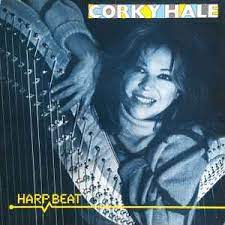
Daily Dose Of Jazz…
Corky Hale was born Merrilyn Hecht on July 3, 1936 in Freeport, Illinois. She learned piano, harp, flute, and cello by the time she was in her teens. She went on to study at the Chicago Music Conservatory and then at Interlochen Center for the Arts in Michigan.
By age 16 she had enrolled in Stephens College, a school for young ladies, for her last year of high school. After graduation she decided to move to Hollywood, California to be a musician but her father had other plans, sending her to nearby University of Wisconsin–Madison. After a year she dropped out, intent on moving to Hollywood but again a compromise with her parents led her to UCLA.
During the 1950s, she became a studio musician in Hollywood, playing harp on albums by Chet Baker, June Christy, Ella Fitzgerald, Anita O’Day, and Frank Sinatra. She worked as a vocalist with Freddy Martin at the Coconut Grove in Los Angeles, California. Jerry Gray invited her to perform with his band in Las Vegas, Nevada where she played piano for Billie Holiday and accompanied her on tour.
As a solo act, she recorded the album Corky Hale Plays George Gershwin and Vernon Duke with Buddy Collette, Howard Roberts, and Chico Hamilton. The late Sixties saw her accompany Tony Bennett on The Tonight Show Starring Johnny Carson and sang a song by herself.
She has worked with Liberace, Barbra Streisand, Elkie Brooks, Harry James, Peggy Lee, James Brown, Spike Jones, George Michael, Roberta Flack, Les McCann, Herbie Mann, Nina Simone and Björk, to name a few. Hale has also produced plays, including Give ‘Em Hell, Harry, starring Jason Alexander and Lullaby of Broadway, a profile of the lyricist Al Dubin. She has appeared at Vibrato, Catalina Bar & Grill, The White House, and the Kennedy Center.
At the University of Wisconsin, Hale was one of the few white students to join the NAACP. She was a birth control teacher at Planned Parenthood in New York and is on the National Advisory Board of NARAL and on the board of WRRAP. She is an American Film Institute associate and is the founder of Angel Harvest, an organization which redistributes unused food from restaurants, hotels, and events to hungry and needy people in Los Angeles.
Harpist, pianist, flutist, and vocalist Corky Hale, who recorded four albums as a leader and has been a theater producer, political activist, restaurateur, and is the owner of the Corky Hale Women’s Clothing Store in Los Angeles.
More Posts: bandleader,flute,harp,history,instrumental,jazz,music,piano,vocal
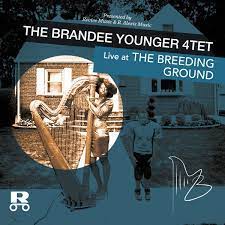
Daily Dose Of Jazz…
Brandee Younger was born on July 1, 1983 in Hempstead, New York and grew up between her birth city and Uniondale, New York. She began her harp studies as a teen under the tutelage of Karen Strauss and continued with several harpists and bassist Nat Reeves. On to undergrad she earned degrees in Harp Performance and Music Business from The Hartt School of the University of Hartford. While at the latter she was mentored by Jackie McLean and the faculty of the Jackie McLean Institute of Jazz and African American Studies.
Off to New York University for grad school six months later with an impressive résumé, she opened for Slide Hampton as a member of Hartford-based collective The New Jazz Workshop. Younger then developed a working relationship with Grammy-nominated producer and artist Ryan Leslie and Grammy Award-winning producer Omen. Building upon that foundation, Younger began working with saxophonist Ravi Coltrane on a series of concerts honoring the music of his late mother, harpist Alice Coltrane.
Over time, Younger has built her career as an educator, concert curator, performer, and bandleader of the Brandee Younger Quartet. Her debut recording as a leader came with Prelude, released in 2011 with Dezron Douglas, E.J. Strickland and vocalist Niia. Since that auspicious moment she has performed with The Harlem Chamber Players, the Hartford Symphony Orchestra, Waterbury Symphony, Soulful Symphony, Ensemble Du Monde, Camerata New York and the Red Bull Artsehcro.
Younger is on the teaching artist faculty (harp) at New York University and The New School College of Performing Arts. She has taught at Adelphi University, Nassau Community College, The Hartt School Community Division at the University of Hartford and has lectured on both sides of the pond. As a leader she has released 6 albums and two compilations since her debut album Prelude in 2011. As a sidewoman/contributor since 2006 she has 38 albums to her credit with folks like E. J. Strickland, Ravi Coltrane, Jeremy Pelt, Common, Robert Glasper, Jane Monheit, Christian McBroide, Lauryn Hill, Drake, and more.
Harpist Brandee Younger infuses classical, jazz, soul, and funk influences to the harp tradition pioneered by her predecessors and idols Dorothy Ashby and Alice Coltrane. She continues to explore and expand her musical vocabulary.
More Posts: bandleader,educator,harp,history,instrumental,jazz,music
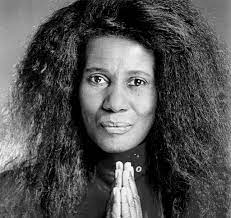
Three Wishes
When the ladies took a moment for themselves, Nica inquired of Alice Coltrane what her three wishes would be if they were able to be given and she told her:
-
-
“I’d like to see my little daughter graduate from the University in Paris.”
-
“I would dig an artist’s colony. Like one block of buildings, or area, where artists and musicians could get together, and teach, and study. Artists could display their art. Writers ~ we’d allow them in, too, but it’d be mostly artists and musicians. We’d have a library, concerts, and sessions, and rooms for tapings. Artists could come in and record. You know, you’ve got it!”
-
*Excerpt from Three Wishes: An Intimate Look at Jazz Greats ~ Compiled and Photographed by Pannonica de Koenigswarter
More Posts: baroness,harp,history,instrumental,jazz,music,organ,pannonica,piano,three,vocal,wishes
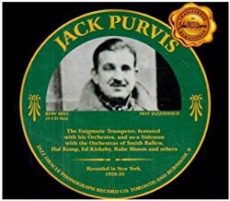
Daily Dose Of Jazz…
John “Jack” Purvis was born in Kokomo, Indiana on December 11, 1906 and became uncontrollable after his mother’s death in 1912. This resulted in being sent to a reform school, but while there, he discovered that he had an uncanny musical ability, and soon became proficient enough to play both the trombone and trumpet professionally. Leaving the reformatory he continued his high school education, while playing paying gigs on the side. One of the earliest jobs he had as a musician was with a band led by the Royal Canadian Mounted Police. Not long afterward, he worked with the dance band of Hal Denman.
After high school he worked in Indiana for a time then went to Lexington, Kentucky where he played with the Original Kentucky NightHawks. Around this time he learned to fly planes. In 1926 he was with Bud Rice and toured New England. The remainder of 1926 and the beginning of 1927 was with Whitey Kaufman’s Original Pennsylvanians. For a short time he played trumpet with Arnold Johnson’s orchestra, and by July 1928 he traveled to France with George Carhart’s band. A brush with the law forced him to return to New York City in 1928.
From 1929 on he joined Hal Kemp’s band and recorded with Kemp, Smith Ballew, Ted Wallace, Rube Bloom, the California Ramblers, and Roy Wilson’s Georgia Crackers. He led a couple of racially mixed recording sessions including the likes of J.C. Higginbotham, and Adrian Rollini. He worked with the Dorsey Brothers, Fletcher Henderson, Fred Waring, Charlie Barnet. the New Orleans Symphony Orchestra.
Moving to Los Angeles, California he found success with radio broadcasting, worked with the George Stoll Orchestra as a writer, and arranged for Warner Bros. Studios. He composed Legends of Haiti for a one hundred and ten piece orchestra.
Arrested in Texas in 1937, he spent a total of nine years in prison for robbery and breaking parole. After his final release he worked at non-musical careers which included working as a chef, aviator, carpenter, radio repairman and a mercenary. One of the earliest trumpeters to incorporate the innovations pioneered by Louis Armstrong in the late 1920s.
His mental stability was always in question, having attempted suicide on several occasions. Trumpeter Jack Purvis, who played trombone, harp, andcomposed Dismal Dan and Down Georgia Way, passed away on March 30, 1962.
More Posts: arranger,harp,history,instrumental,jazz,music,trombone,trumpet





